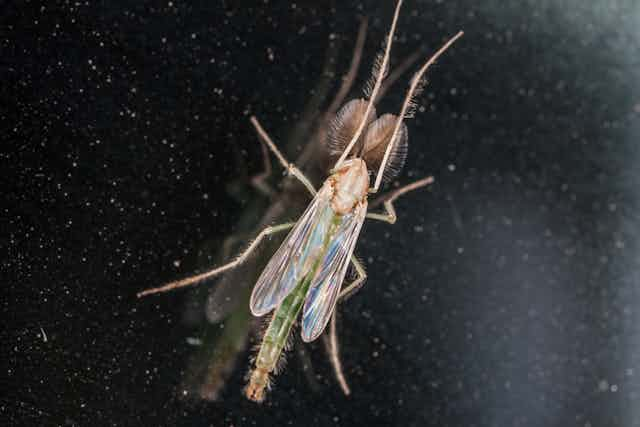Too big to fail. That expression could often be heard in 2008. The meltdown in the international banking system was choking off the supply of cash to finance and industry. The US, the UK and other nations rushed through moves to shore up teetering corporations. General Motors was bailed out while the British bank Northern Rock was nationalised and brought under control by the government. To not act would have been to risk large sections of our globalised economy going to the wall.
We can think of these large corporations as “keystone species” in an economic ecosystem. Remove them and the entire system can come crashing down. This may support the view that the affairs of smaller corporations can be safely ignored. Businesses go bust every day. However, there may be vital information about the state of entire economies lurking in data about seemingly inconsequential businesses.
The natural world is subject to the same sort of process. If we are to avoid a collapse in ecosystems then we may be best served by monitoring the presence and absence of species great and small, as they all give important information as to the underlying health or resilience of a system. This is the conclusion of new research we conducted as part of an international team, and published in Ecology.
Detecting trouble ahead
Given humanity’s continual assault on biodiversity, we risk producing rapid changes that can sweep through an entire ecosystem. Such changes are called critical transitions and have been observed in kelp forests, drylands, shallow lakes or even in the total ecosystem collapse of portions of the Great Barrier Reef. Very few ecosystems are not being affected in some way.
If we could get an early warning of critical transitions, then we may be able to put in place changes to avoid future collapse. Searching for these warning signals has become a hot research topic.
The theory underlying much of this work is that ecosystems can take multiple stable states. For example, a freshwater lake can have clear water, and an abundance of plants and fish species. It can also be a cloudy, dark green algal soup with very few plants and fish. Lakes can flip from clear to cloudy water state in a matter of weeks – a classic critical transition, which powerful feedback loops make very hard to reverse.
Phosphorus-rich fertiliser used in surrounding fields often drives such critical transitions in lakes by promoting plant growth. Up to a point. Very high phosphorus levels lead to an increase in algae which can suddenly erupt in large blooms that block out light. This initiates a die back of plants which, along with a number of other chemical changes in the water and lake sediment, increases phosphorus even further. New feedback loops keep high concentrations of phosphorus, dense algae colonies and very little else.

This matters because lakes provide a wide range of ecosystem services that support surrounding communities. Lakes such as Erhai in China have witnessed very rapid increases in population around it, agriculture and farming. This produces algae blooms that can decimate fishing and so threaten livelihoods. Tourism can also be affected given that clear waters and a wide range of species bring many people to the region.
Early warning signals have been detected in lakes that have experienced critical transitions. As the system is being driven from the clear water to the cloudy water stable state, statistical analysis of variables such as the concentration of phosphorus in the water can show that the system is approaching a tipping point between the two states. A recent study detected early warning signals in lake Erhai. The key challenge of course is to detect the earliest signal, so as to have the best chance of taking action to avoid a collapse, while also minimising the chance of false alarms.
Diving deeper into lake behaviour
We wanted to see if changes in algae and non-biting midges could predict a critical transition. Why these species? Because their remains are well persevered in sediment found on the bed of the lake. Along with traces of pollen and indicators of water chemistry, these remains allow us to read the history of the lake.
Using sediment cores from lake Erhai and other Chinese lakes, some of which have undergone critical transitions in the past 50 years, we were able to reconstruct algae and midge communities. From these data we identified three key types: strongly competitive but slowly reproducing “keystone” species; weakly competitive but fast reproducing “weedy” species; and slowly reproducing and weakly competitive “canary” species. Like canaries that coal miners used to check for poisonous gasses deep underground, ecosystem canaries are often the first to disappear.

But we cannot rely on just looking for their removal from the population, because these canary species are continually appearing then disappearing. We need to link their presence or absence to changes in the competitive interactions between the three types of algae and midge communities.
Low phosphorus lakes have a healthy turnover of keystones, weedy and canary species. As phosphorus levels rise, strongly competitive algae keystone species proliferate at the expense of canary species until the keystones eventually collapse themselves. This is followed by a bloom of weedy species in the absence of competition: the critical transition is complete.
To wait for reductions in the keystones would be to miss the window of opportunity of avoiding the collapse. Our early warning signal was able to detect an impending critical transition much sooner than other techniques that monitor phosphorus levels in the lake water, because we are looking directly at some of the ecological mechanisms that are involved in the critical transition itself.
As fascinating as these ecological dynamics are, ultimately our study will have worth if it can produce useful early warning techniques that can be used to monitor ecosystems in real time. And that these warnings are heeded.

